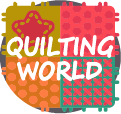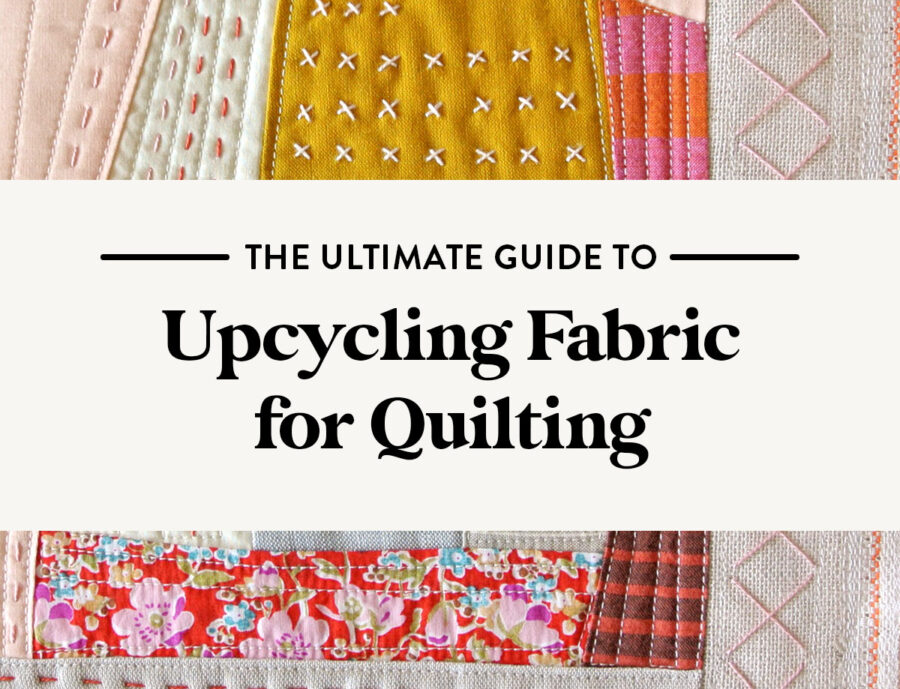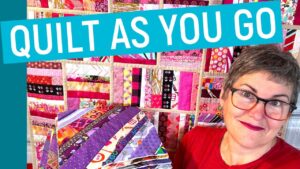Ironing fabric is an important step in the quilting process. Ironing not only helps to remove wrinkles and creases from your fabric, but also helps to set the dye and stabilize the fabric so that it will remain flat and easy to work with. When deciding whether or not to iron your fabric, it is important to consider the type of fabric, the intended use of the fabric, and the type of quilting project you are working on.
Types of Fabric
The first step in deciding whether or not to iron your fabric is to consider the type of fabric you are working with. Different fabrics have different ironing requirements. For example, natural fibers such as cotton, linen, and wool can all be ironed on a medium setting. Synthetic fibers such as polyester, nylon, and rayon should be ironed on a low setting. Other fabrics, such as velvet and suede, should not be ironed at all. Be sure to read the care instructions on the fabric label to determine the best setting for your fabric.
Intended Use
The next step in deciding whether or not to iron your fabric is to consider the intended use of the fabric. If you are using the fabric for a quilt top, then you will want to iron out any wrinkles or creases before piecing the fabric together. This will help ensure that the fabric pieces lay flat and fit together properly. If you are using the fabric for other quilting projects, such as appliqué or binding, then it is not necessary to iron the fabric beforehand.
Project Type
Finally, consider the type of quilting project you are working on when deciding whether or not to iron your fabric. For example, if you are making a quilt with a traditional pieced pattern, then it is important to iron the fabric before stitching it together. This will help ensure that the pieces fit together properly and that the quilt top is smooth and flat. If you are working on a quilt with a modern pieced pattern, then it is not necessary to iron the fabric beforehand.
Conclusion
Deciding whether or not to iron your fabric is an important step in the quilting process. When deciding whether or not to iron your fabric, it is important to consider the type of fabric, the intended use of the fabric, and the type of quilting project you are working on. By following this guide, you can ensure that your fabric is ready for use and that your quilt turns out looking its best.
Quilting is a process that involves sewing together pieces of fabric to create a design. Ironing the fabric prior to quilting can help to ensure that the fabric pieces lay flat and do not become distorted during the quilting process. Ironing the fabric will also help to remove any wrinkles and create a smoother surface for sewing. It is generally recommended to iron the fabric before starting the quilting process, but this may not always be necessary depending on the fabric and the quilt design.
How To Iron Fabric Before Sewing For The Best Results
1. Prepare the Fabric: Before ironing, you should make sure the fabric is clean, free of any dirt, dust, or other debris. Shake out the fabric to remove any creases and wrinkles.
2. Set the Iron to the Appropriate Temperature: Different fabrics require different temperatures and steam settings. Always check the fabric’s care label and adjust the iron accordingly.
3. Pre-Treat the Fabric: If the fabric is new or has been washed, pre-treat it with water to dampen the fabric. This will help the iron glide easier.
4. Begin Ironing: Start in the middle of the fabric and work your way outward. Make sure to press the iron in a downward motion and avoid dragging it across the fabric.
5. Use Steam and a Pressing Cloth: Using steam can help to remove stubborn wrinkles. Place a pressing cloth over the fabric, and use a light to moderate steam setting.
6. Start Sewing: Once the fabric has been ironed, it is ready to be sewn. Sewing on fabric that has been properly ironed will help provide the best results.
Why Do You Need to Press Fabric Before Using It? – An Essential Guide
Press fabric before using it to ensure that it is wrinkle-free, and that the fabric lays flat and smooth when sewing or quilting. It is especially important to press fabric before using it to create a garment, as the fabric will have a more professional look and fit better.
Pressing fabric is also important to remove any dirt or debris that may have accumulated while in storage. Additionally, pressing fabric can help to remove any shrinkage that may have occurred after washing.
When pressing fabric, use a medium-high heat setting on an iron, and press on the wrong side of the fabric. Use steam if necessary and press in the direction of the grain. If the fabric is very delicate, use a pressing cloth or a damp towel between the fabric and the iron.
When pressing fabric, it is important to not over-press it. Over-pressing can cause the fabric to become shiny, lose its texture, and discolor. It is also important to be mindful of the type of fabric you are pressing, as some fabrics may be damaged by the heat of an iron.
How to Quilt: Should You Iron Fabric Before Quilting?
The answer to this question is, it depends. Ironing the fabric before quilting is a personal preference. If you are using a heavy fabric then it may be beneficial to iron it first to ensure the fabric is flat and easier to work with. However, if you are using a lighter weight fabric then ironing it may not be necessary. It is important to note that if you are using a fabric with a pattern or design, it is best to iron it before quilting to make sure the design is not distorted.
How to Remove Fold Lines from Fabric Easily and Quickly
1. Iron the fabric: Use a steam iron and a pressing cloth to gently press the fold lines in the fabric until they are flattened.
2. Wet the fabric: Wet the fabric with warm water and then press it with a steam iron until the fold lines are gone.
3. Use an ironing board: Place the fabric on an ironing board and press the fold lines out with a steam iron.
4. Use a steamer: Use a steamer to remove the fold lines from the fabric.
5. Use a dryer: Place the fabric in the dryer and run it on the low setting. The heat and the tumble action should help to remove the fold lines.
6. Hang the fabric: Hang the fabric in a warm, dry room and let it hang overnight. This should help to remove the fold lines.
7. Use a clothes brush: Use a clothes brush to brush out the fabric and remove the fold lines.
8. Use a garment steamer: Use a garment steamer to steam the fabric and help to remove the fold lines.
This guide provides helpful information for quilting enthusiasts who are considering whether or not to iron their new fabric. Ironing can be a great way to flatten the fabric and ensure that it lies perfectly flat in the quilt. However, if the fabric is delicate, it may be best to avoid ironing altogether. Be sure to assess the fabric before starting to iron to ensure the best results for your quilt.
Ironing is a key step in quilting as it helps to ensure that your fabric is flat and without creases when you start to sew. Ironing is especially important when using new fabric, as it can help to remove any wrinkles or folds that may have been caused during the manufacturing process. Taking the time to iron your new fabric can help you achieve the best results when quilting, so it is highly recommended.




